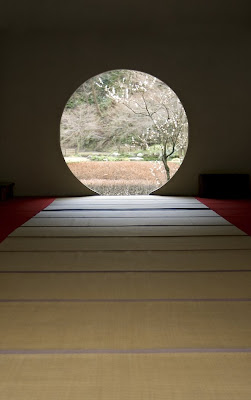Perhaps the idea that architecture is only the outside of buildings comes from its representation as exterior photographs in magazines and books. These flat simulacra are mere shadows of architecture. They are not the real thing. Yet we commonly judge buildings by pictures without considering the total experience of architecture. Architecture is more that the exterior elements. It is the interior space; it is sounds reverberating through a building; it is the olfactory environment of aromas; it is feeling the warmth of the sun absorbed and radiated by stone and mortar.

Juhani Pallasmaa explores this idea that architecture is more than the appearance of exterior shapes, in his book The Eyes of the Skin (John Wiley & Sons, ISBN 0470015799). The small publication (80 pages), which has circulated since 1996, is little known outside the architectural profession. Pallasmaa argues that western culture relies too heavily on one sense, vision. The dominance of vision has led to our evaluating architecture only by how it looks – and usually only how it looks in a two-dimensional photographic record of a building’s exterior. That is how things get published in architectural journals: by the seductive quality of the photographs. Pallasmaa claims “buildings have turned into image products detached from existential depth and sincerity.”
In reality, we “see” with much more than our eyes. In an old masonry structure, we feel the damp atmosphere, smell the mustiness of age, and know the texture of rough stones under our feet. We do not need to use our eyes to understand these things about the architecture.
In reality, we “see” with much more than our eyes. In an old masonry structure, we feel the damp atmosphere, smell the mustiness of age, and know the texture of rough stones under our feet. We do not need to use our eyes to understand these things about the architecture.
 We also cannot detach architecture from its environment. The sounds and scents of nature contribute to the feelings we have about the buildings we insert into specific sites. The mood of the Golden Pavilion in Kyoto is different from the atmosphere surrounding an Italian villa. Neither can be detached from its surroundings. The surroundings establish the character of the architecture.
We also cannot detach architecture from its environment. The sounds and scents of nature contribute to the feelings we have about the buildings we insert into specific sites. The mood of the Golden Pavilion in Kyoto is different from the atmosphere surrounding an Italian villa. Neither can be detached from its surroundings. The surroundings establish the character of the architecture. 
The muscular movement of negotiating steps, the feel of ambient sunlight on a wooden porch, the temperature of filtered light through a carved screen. These ways of experiencing architecture have nothing to do with vision. This is experiencing architecture with the eyes of the skin.

Pallasmaa also makes a case for the use of natural building materials, discusses the
 significance of shadows (see also the excellent book In Praise of Shadows by Junichiro Tanizaki),
significance of shadows (see also the excellent book In Praise of Shadows by Junichiro Tanizaki),
and relates architecture to the shape and scale of the human body. The table of contents for The Eyes of the Skin provides intriguing clues to Pallassmaa’s s unique approach to architecture: The Shape of Touch. Spaces of Scent. Oral versus Visual Space. Acoustic Intimacy.
The Eyes of the Skin reminds us that architecture is – or ought to be – a multi-sensory experience.
The Eyes of the Skin reminds us that architecture is – or ought to be – a multi-sensory experience.